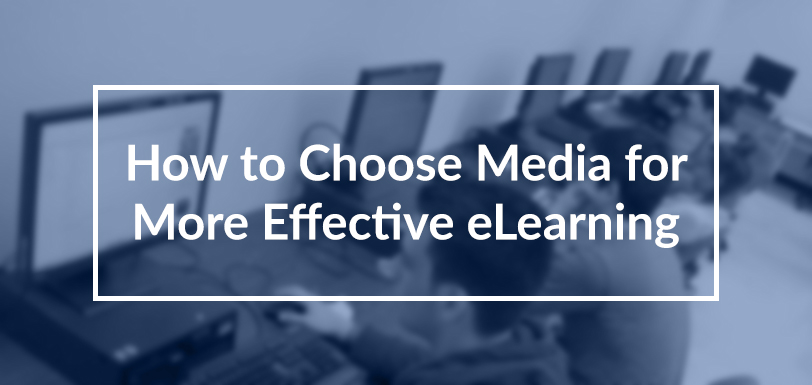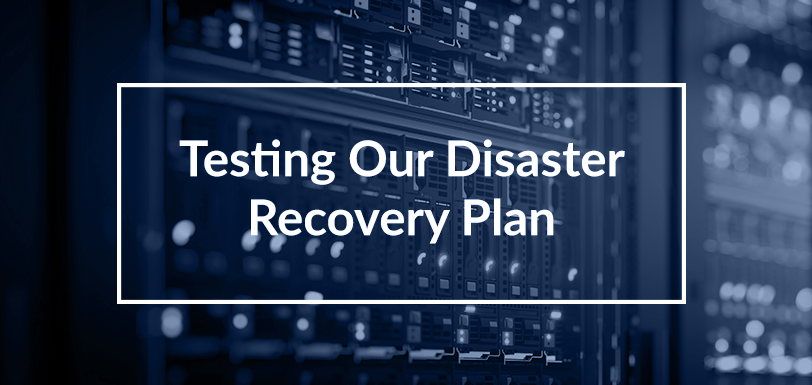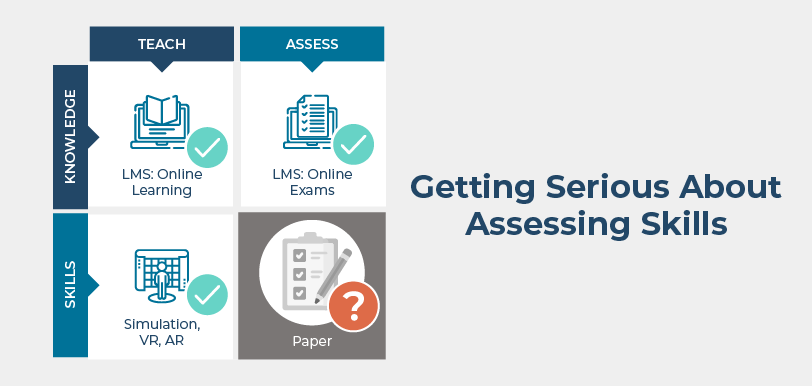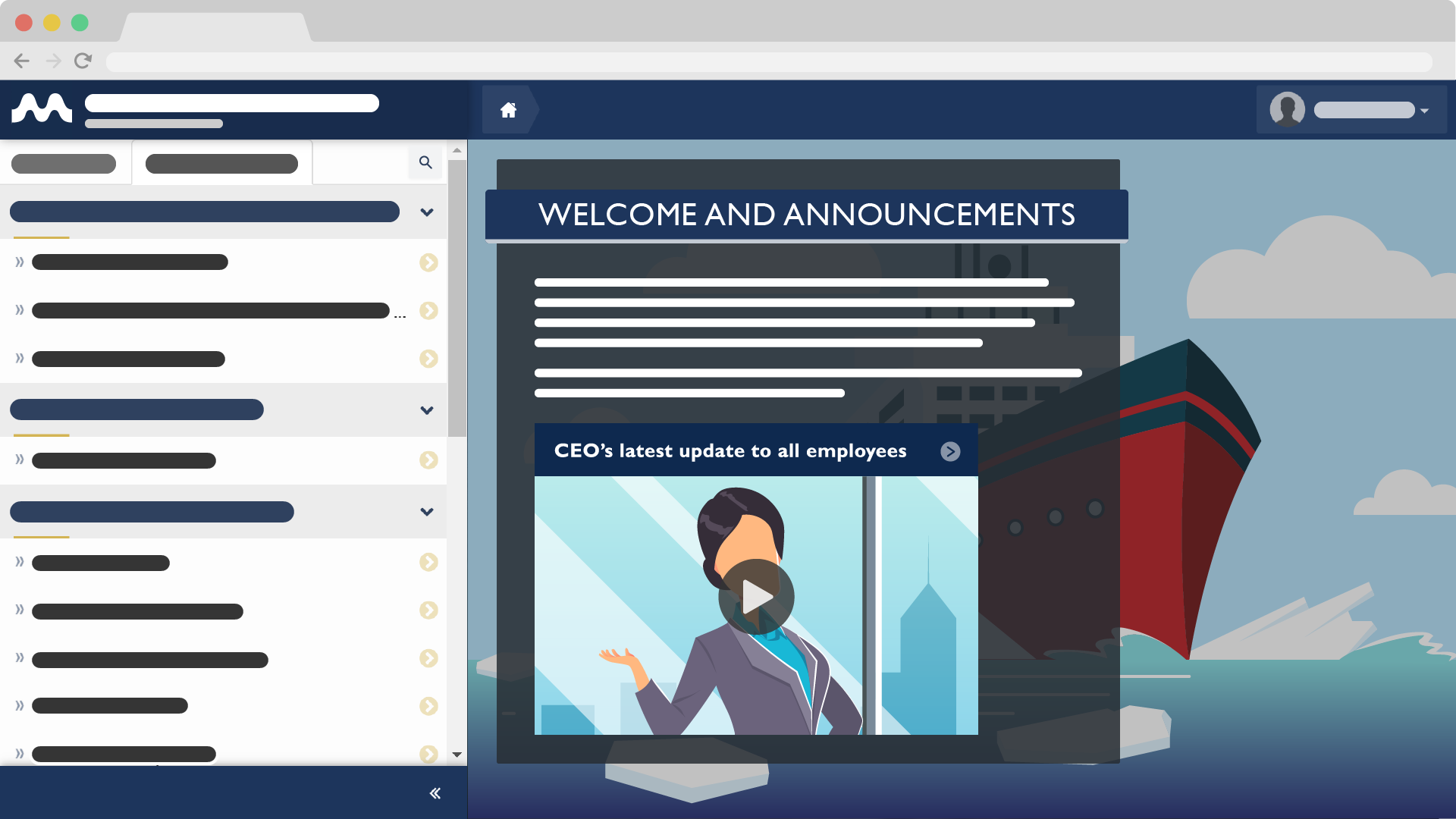How to Choose Media for More Effective eLearning
Mar 8, 2017 Murray Goldberg 0 eLearning, Maritime Training, Training ContentSince maritime training moved online, people have been arguing about the best choice of media. Is simulation better? Text? Video? What about online gaming? All of these can be very effective tools in maritime training. Each has its strengths and limitations, and the best choice is not always the most obvious one.
This is the third in a series of blog posts that looks at media choices in maritime eLearning. The first article looked specifically at the use of text – a frequently misunderstood medium. The second stressed the fact that there is no such thing as the “best” media choice. It also discussed the strength of combining media, and tips for doing so.
This third article will look at different media types and their strengths and limitations. It will also provide examples of their use.
Choosing Your Media
I first experienced the power of “new media” on a 1999 visit to National Institute for Multimedia Education (NIME) in Japan. I was led into a room where the walls, floor and ceiling were all projection screens. The projections created a totally immersive environment. I had a control stick and I was able to control my virtual flight through a simulation. It was an amazing experience with obvious learning applications, not unlike modern bridge simulators. While these kinds of simulations are very powerful, they are not automatically the best choice for every learning goal.
So how do we choose?
There are many aspects to consider when choosing media. Among the top two considerations are educational effectiveness and cost.
We discussed cost in the first article of this series. For our purposes, let’s just add a reminder that maintenance of educational content can be burdensome. This is especially true for content that requires frequent updates. Sophisticated media choices create a far more expensive maintenance cost (i.e. text is easy to update, while videos are more costly).
I do not suggest that cost be the sole determinant for media choice. But ignoring it will lead to content with a limited lifespan. This will waste your initial investment. An out-of-date learning resource will lose the confidence of your learners and demonstrate that your organization is not committed to training and safety. This is important. Budget accordingly.
With that out of the way, let’s turn to the primary consideration: educational effectiveness.
Consider Your Learning Goals First
The best choice of media depends on your learning goals. There are many ways to categorize learning goals, but here is one:
- Assimilation of knowledge. Here we have information that the trainee needs to know. For example – what is the draught of the vessel? (or “draft” – see this excellent article if you’ve ever wondered which is correct).
- Understand a concept. Here we are trying to teach how something works. This goes beyond facts to yield an understanding of how, for example, a piece of equipment operates. I press the button, but nothing happens – why did that happen and what do I do?
- Perform a task. Here we are trying to teach the ability to do something, safely and effectively. An example might be to launch a rescue craft or take a sounding.
- Reason and make decisions. Here we are preparing the trainee to make decisions and respond to novel situations. For example, given the complexities of shipboard systems, it is impossible to teach procedures for all possible failure modes – especially when those modes result from the unexpected interactions of more than one piece of equipment.
It is generally simple to list which learning goals are needed in order to teach the competencies that your trainees are required to have. Many competencies require the fulfillment of more than one of these goals.
Let’s consider the skill of donning a fire suit as an example:
- There is a reasonable amount of knowledge to learn: what the components of the fire suit are, where they are stored, etc.
- There is a small bit of conceptual knowledge needed – such as how the suit protects against heat.
- The actual ability to perform the task (don the suit) is central, equal in importance to the knowledge of the components of the fire suit.
- And finally, being able to reason is not a large requirement of donning a fire suit. There may be issues encountered which take some reasoning to resolve, but they are not a big part of the learning.
As such, the primary learning goals for donning a fire suit can safely be considered to be “Knowledge assimilation” and “Task performance”. You can use the same process to get a general idea of the primary learning goals for any competency. Once you have that list, it is time to look to the media choices.
Matching Media to Learning Goals
When you list the learning goals required for each competency, the choice of media becomes pretty intuitive. I will give a quick overview, although there is much more that could be said about each. I am also going to make some sweeping generalizations (for which I hope you will forgive me). Having said that, you will find the basics below.
Text
Text is a very “dense” media and can convey complex and deep information, if written well. Text is often an excellent choice for conveying facts or explaining concepts.
Here is an example of text used at BC Ferries to describe the various types of vessel certificates. While text is excellent at conveying knowledge, it is much less effective at teaching a skill or the ability to reason.
Please note that there are very few competencies that do not have some knowledge as a core requirement. All skills and reasoning are be based in factual knowledge. While textual descriptions are not always enough on their own, they are almost always a valuable part of a multi-media learning approach.
Keep in mind, also, that the cost of maintaining textual descriptions is comparatively very low. Therefore, where textual media does the job, it is wise to use it.
Imagery
Images, like text, are about conveying information. They can also be helpful in explaining concepts – especially when combined with text. Imagery can also be helpful in training simple skills.
A simple example of combining text and imagery to explain a skill can be found in the BC Ferries’ ERA Self-study Guide.
If your goal is to provide a trainee with the ability to recognize an object or to find components of that object (a button for example), then, as they say, “a picture is worth a thousand words”.
Images, like text, can be quite inexpensive to update – especially if those images are simply annotated pictures.
Other types of imagery such as graphs and diagrams can be used to visualize complex information or processes. These still fall into the “knowledge transfer” category of learning goals, but for the right kind of information they can be incredibly effective.
Keep in mind that images can almost never be used alone. At the very least, they require textual descriptions to guide the trainee in terms of what is being taught, and what to look for on the image.
Video and Audio
The strength of video is in its power to provide familiarity with an item or an environment (eg. a ship tour) and to record demonstrations. While it is credible at conveying information, it is more suited to demonstrating conceptual knowledge, and more suited still to training skills. For example, it is easy to imagine a video which explains what it means to take a sounding, and then lead the viewer through the process of actually taking one.
There are some good video examples here. The top four “Standards Videos” are used to convey information and demonstrate good practice. The remaining “SEA Web – New Features and Updates” videos are good examples of teaching skills via video.
Audio can provide benefits similar to those of video – namely familiarity with sounds. As a good example of the use of audio, consider this page which teaches various emergency ship signals, maneuvering signals and verbal signals.
Simulation
The maritime industry has been employing simulation in training for some time. There are a large number of excellent resources that discuss its utility in the industry.
As is already evident, simulator training is an outstanding vehicle for training both skills and the ability to reason in novel situations. However, it is not generally useful at conveying facts, and only somewhat useful at generating a conceptual understanding. Maritime industry simulation comes in many varieties including full mission bridges, engine room simulations (sometimes integrated with the bridge simulator), part-task simulators, and finally web-based simulations. Each has their place (and their price).
Conclusion
Each media choice has its own strengths and limitations. It is not necessarily the case that a more expensive or sophisticated media is better. And as covered in the previous article, combining media types will almost always yield better educational results. The bottom line is – use the media that will do the job, keeping in mind that whatever choice you make, you’ll need to create and also maintain it.
In the next article of this series I’d like to take a special look at educational gaming and it’s potential as a tool for maritime training. If you would like to receive an e-mail notification when that article is ready, please sign up here if you have not already done so. Until then – sail safe and happy training!
Follow this Blog!
Receive email notifications whenever a new maritime training article is posted. Enter your email address below:
Interested in Marine Learning Systems?
Contact us here to learn how you can upgrade your training delivery and management process to achieve superior safety and crew performance.






